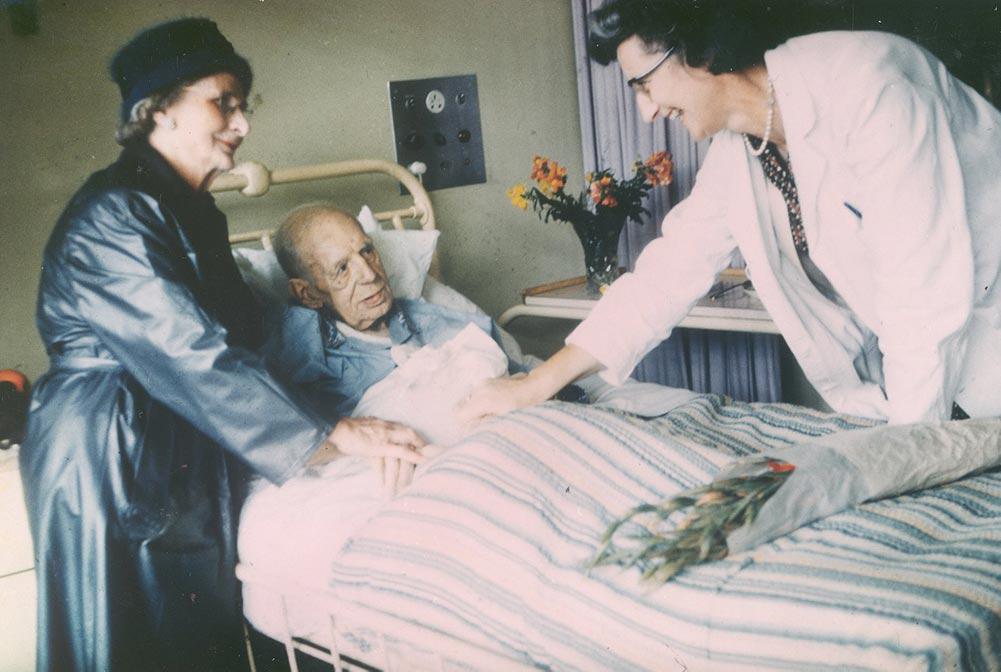AUDIO
It was during Cicely's time at St Thomas' after World War II that she developed her interest in improving the ways dying people were cared for. She realised that whilst hospitals were equipped to support ill people, they fell short at providing the right care needed for the dying.
She volunteered as a nurse at St Luke’s Home for the Dying Poor and saw the benefits of providing excellent nursing care for people nearing the end of their life but also observed the lack of professional medical help available.
After several years advocating for better ways to care for dying people, a doctor told her that the only way she would influence the medical profession was to become a doctor herself.
She returned to St Thomas’ to undertake medical training, qualifying in 1957. After her training was complete, Cicely, now Dr Saunders, obtained a grant to research the use of morphine to alleviate pain for people who were dying. It was at St Joseph's that she once more witnessed excellent nursing care, but lack of clinical input from doctors. She also used her time there to record her conversations with patients and take photographs of them when they were first admitted to the hospice, and after they were given morphine for pain control.
As Dr Saunders spoke to patients and their families, and understood better the toll serious illness takes on an individual, she developed her concept of 'total pain' and the need to provide physical, social, spiritual and emotional care for people who are dying.
You matter because you are you, and you matter until the last moment of your life
RESOURCES
The items below will require an internet connection (WiFi, 3G or 4G)
LISTEN
As part of the St Christopher’s Oral History Project, hear from St Christopher’s pioneer Dr Mary Baines on pain control for the dying.


